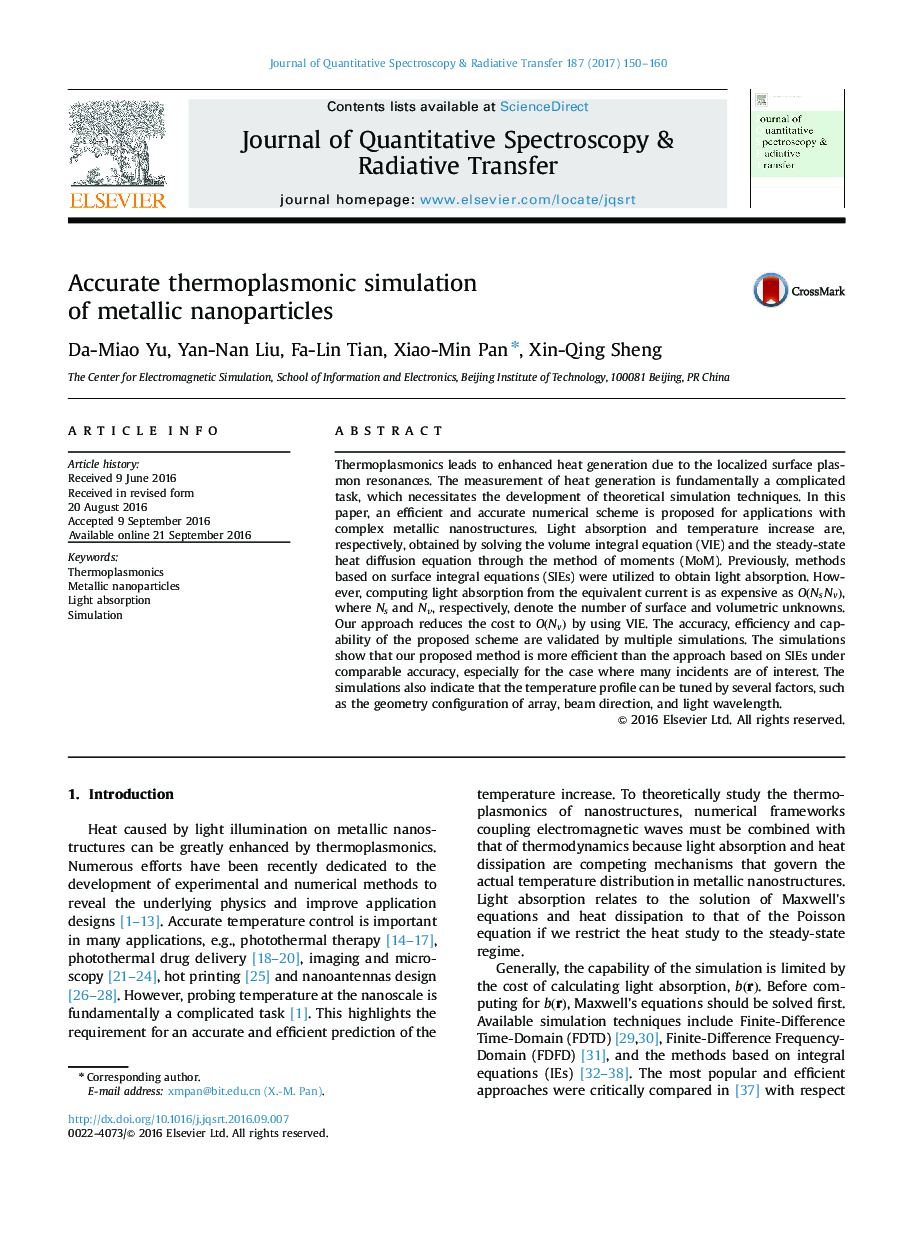| کد مقاله | کد نشریه | سال انتشار | مقاله انگلیسی | نسخه تمام متن |
|---|---|---|---|---|
| 5427423 | 1508628 | 2017 | 11 صفحه PDF | دانلود رایگان |
- An accurate thermoplasmonic simulation framework is proposed by combining the volume integral equation and the steady-state heat diffusion equation.
- The advantage of using the volume integral equation over the commonly employed surface integral equations is discussed and validated.
- The method of moment is utilized to discretize both types of equations.
- Some factors that can tune the temperature distribution are discussed, such as the geometry profile and the incident angle.
Thermoplasmonics leads to enhanced heat generation due to the localized surface plasmon resonances. The measurement of heat generation is fundamentally a complicated task, which necessitates the development of theoretical simulation techniques. In this paper, an efficient and accurate numerical scheme is proposed for applications with complex metallic nanostructures. Light absorption and temperature increase are, respectively, obtained by solving the volume integral equation (VIE) and the steady-state heat diffusion equation through the method of moments (MoM). Previously, methods based on surface integral equations (SIEs) were utilized to obtain light absorption. However, computing light absorption from the equivalent current is as expensive as O(NsNv), where Ns and Nv, respectively, denote the number of surface and volumetric unknowns. Our approach reduces the cost to O(Nv) by using VIE. The accuracy, efficiency and capability of the proposed scheme are validated by multiple simulations. The simulations show that our proposed method is more efficient than the approach based on SIEs under comparable accuracy, especially for the case where many incidents are of interest. The simulations also indicate that the temperature profile can be tuned by several factors, such as the geometry configuration of array, beam direction, and light wavelength.
Journal: Journal of Quantitative Spectroscopy and Radiative Transfer - Volume 187, January 2017, Pages 150-160
